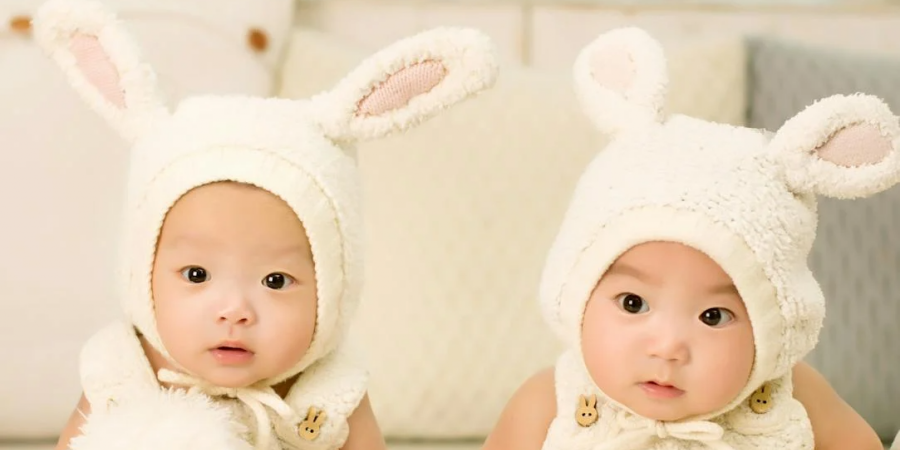

 Twins have always fascinated people due to their unique bond and the various intriguing aspects of their existence. Here are some interesting facts about twin babies:
Twins have always fascinated people due to their unique bond and the various intriguing aspects of their existence. Here are some interesting facts about twin babies:
🙂↔️TYPES OF TWINS
1. dentical Twins (Monozygotic):
- Identical twins result from a single fertilized egg splitting into two embryos. They share the same genetic material, which is why they look almost exactly alike.
- They are always the same sex and have the same blood type.
2. Fraternal Twins (Dizygotic):
- Fraternal twins occur when two different eggs are fertilized by two different sperm. They are genetically similar to regular siblings, sharing about 50% of their DNA.
- They can be of the same or different sexes.
Birth Rates and Genetics
1. **Increasing Twin Birth Rates:**
- The birth rate of twins has increased significantly over the past few decades, particularly in developed countries. This rise is attributed to factors like the increased use of fertility treatments and the tendency to have children later in life, which naturally increases the likelihood of having twins.
2. **Genetic Predisposition:**
- The likelihood of having fraternal twins can run in families, particularly on the mother's side. Women who have fraternal twins often have a family history of hyperovulation, the tendency to release more than one egg during ovulation.
## Unique Developmental Aspects
1. **Twin Bond:**
- Twins often develop a unique bond that can start in the womb. They may interact with each other by touching and even playing, showcasing an early bond that continues to grow after birth.
2. **Language Development:**
- Some twins develop a private language or cryptophasia, which only they understand. This phenomenon is thought to result from their close interaction and shared developmental milestones.
## Health and Lifespan
1. **Health Risks and Benefits:**
- Twins, particularly identical twins, can face unique health challenges. They may have a higher risk of certain congenital conditions and complications during pregnancy and birth. However, studies have shown that twins, especially those with a close bond, may experience psychological benefits and support that can contribute to their overall well-being.
2. **Longevity:**
- Research suggests that twins may live longer than non-twins, partly due to the social and emotional support they provide each other throughout their lives.
## Famous Twins and Cultural Impact
1. **Historical Figures:**
- Many famous twins have left a mark on history, such as Jacob and Esau from the Bible, or the Wright brothers, who were not twins but are often mentioned in twin studies for their close collaboration and innovative achievements.
2. **Cultural Representation:**
- Twins have a prominent place in folklore, mythology, and popular culture. From the mythical twin founders of Rome, Romulus and Remus, to modern-day celebrity twins like Mary-Kate and Ashley Olsen, twins captivate the public's imagination.
## Research and Scientific Contributions
1. **Twin Studies:**
- Twins have played a crucial role in scientific research, particularly in the fields of genetics and psychology. Twin studies help scientists understand the influence of genetics versus environment on various traits and behaviors.
2. **Epigenetics:**
- Identical twins are key to epigenetics research, which studies how environmental factors can cause genes to be expressed differently. Despite having the same DNA, identical twins can exhibit differences in appearance, health, and behavior due to epigenetic changes.
Twins continue to be a subject of fascination for scientists and the general public alike, offering valuable insights into human development, genetics, and the nature of the human bond. Their unique characteristics and the mysteries surrounding their development make twins a continually intriguing topic.
